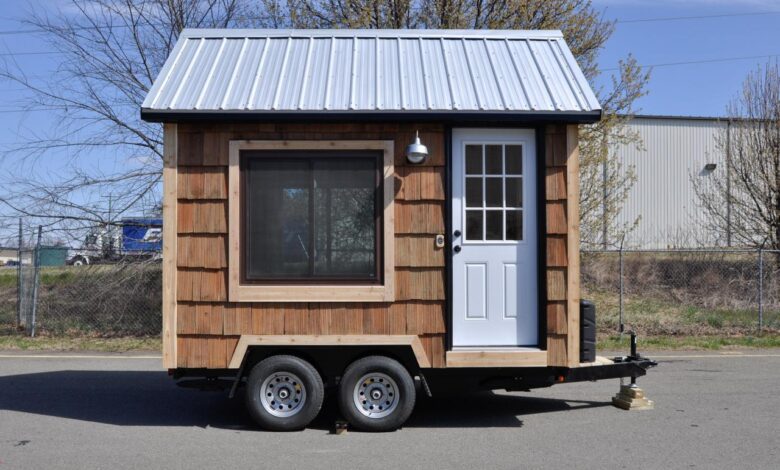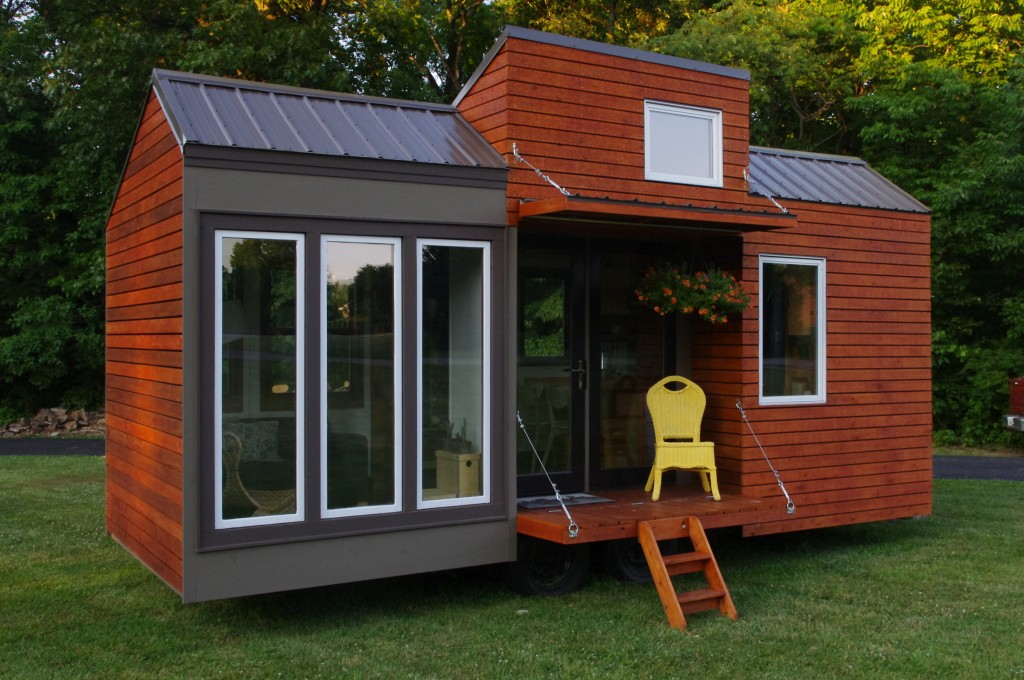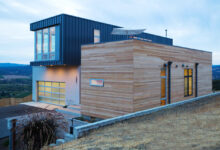The Rise of Micro-Homes Redefine Sustainable Living

The traditional dream of a spacious suburban home with a sprawling backyard is being challenged by a new and rapidly growing trend: micro-homes. Driven by a confluence of soaring urban housing costs, environmental concerns, and a desire for greater flexibility, millions of people worldwide are embracing smaller, smarter, and more sustainable living spaces. This isn’t just about tiny apartments; it’s a profound shift in lifestyle, urban design, and our relationship with material possessions. The future of micro-living is a testament to human ingenuity, leveraging technology, innovative architecture, and a minimalist philosophy to create a high quality of life within a small footprint. This article will take a deep dive into the key drivers behind this movement, exploring the design principles, technological innovations, and societal implications that are defining the future of micro-living, and why it might just be the answer to some of our most pressing urban challenges.
The Philosophy of Less

Micro-living is more than a housing solution; it’s a lifestyle choice rooted in a desire for simplicity and purpose. It’s a direct response to the excesses of consumer culture and the economic realities of modern life.
A. Economic Freedom and Affordability
The single biggest driver of the micro-living movement is economic. As real estate prices in global cities continue to climb, a conventional apartment or home has become an unattainable luxury for many. Micro-apartments, co-living spaces, and tiny homes offer a path to homeownership or affordable rent, freeing up income that can be spent on experiences, travel, or a debt-free lifestyle. This economic liberation is a powerful motivator for a generation that values financial flexibility over a large mortgage.
B. Environmental Responsibility
Micro-living is an inherently sustainable lifestyle. A smaller living space requires less energy to heat and cool, uses fewer building materials, and generates less waste. This is a powerful draw for environmentally conscious individuals who want to reduce their carbon footprint. The philosophy of “less is more” directly translates to a lower environmental impact, as it discourages the accumulation of unnecessary material goods and promotes a more mindful approach to consumption.
C. The Pursuit of Mobility and Flexibility
Modern workforces are increasingly mobile, and the idea of being tied to a single location by a large mortgage is becoming less appealing. Micro-living offers unparalleled flexibility. It’s easier to move a tiny home, and the lack of a long-term commitment in a micro-apartment allows individuals to relocate for work or personal reasons without the traditional hassles of selling a home or breaking a long-term lease. This mobility is a reflection of a society that values experiences over possessions and is constantly on the move.
The Design Principles of Micro-Living
Micro-living is a masterclass in innovative architecture. Architects and designers are using every trick in the book to create spaces that are not only functional but also beautiful, comfortable, and intelligent.
A. Multi-Functional Furniture and Spaces
In a micro-home, every square inch counts. The key to successful design is furniture that can perform multiple functions and spaces that can adapt to different activities.
- Transformable Beds: A bed that folds up into the wall to reveal a living room, or a couch that transforms into a bed, is a staple of micro-living. This frees up valuable floor space during the day.
- Hidden Storage: Storage is the lifeblood of a small home. Architects are designing clever, hidden storage solutions, from drawers under the stairs to cabinets built into the walls, ensuring a clutter-free environment.
- Modular Units: Furniture and shelving systems are often modular, allowing residents to reconfigure their space to suit their needs, whether it’s setting up a home office or hosting a dinner party.
B. The Illusion of Space
Designers use a variety of techniques to make a small space feel larger and more open.
- Light and Color: A bright, minimalist color palette and an abundance of natural light create an open, airy feel. Large windows, skylights, and mirrors are used to reflect light and create the illusion of more space.
- Vertical Integration: The focus shifts from the horizontal to the vertical. Lofts, high ceilings, and floor-to-ceiling shelving are used to maximize vertical space, creating a feeling of grandeur and providing additional functionality.
- Seamless Transitions: Open floor plans and a lack of interior walls create a seamless flow between different areas of the home, blurring the lines between the kitchen, living room, and bedroom.
The Technological Edge
Technology is not just a convenience in a micro-home; it’s a necessity. Smart devices and automation are used to maximize efficiency, security, and comfort within a small footprint.
A. Automation and Centralized Control
A smart home system can control everything from lighting and temperature to entertainment and security from a single device or a smartphone app. This level of control allows residents to optimize energy use, making the home more sustainable and efficient. It also allows for a greater sense of security, as residents can monitor their home remotely.
B. Smart Appliances and Space-Saving Gadgets
Appliances in a micro-home are designed to be compact and highly efficient. A single-unit washer-dryer, an induction cooktop that is also a workspace, and a refrigerator that is integrated into a kitchen cabinet are all staples of smart, space-saving design. These appliances are often connected to the internet, allowing residents to monitor their energy use and receive alerts about maintenance needs.
C. The Rise of the Co-Living Hub
Micro-living is not just about a standalone home; it’s about a community. Co-living spaces are a modern take on dormitories, offering small, private rooms with shared amenities like kitchens, co-working spaces, and gyms. These communities are leveraging technology to manage everything from booking a shared space to a communal calendar of social events, fostering a sense of community and belonging in a new kind of urban village.
A New Urban Landscape

The micro-living movement is having a profound impact on urban planning and real estate. It’s challenging the way we think about housing and is a potential solution to some of our most pressing urban challenges.
A. A Solution for Urban Housing Crises
As cities grow and become more expensive, the micro-living model offers a viable path to density and affordability. By building more small, well-designed units, cities can accommodate a larger population without sprawling into green spaces. This is a key strategy for sustainable urban development.
B. A Redefined Real Estate Market
The real estate market is adapting to the demand for micro-living. Developers are building more micro-apartments and co-living spaces, and a new market for tiny homes and prefab housing is emerging. This diversification of the housing market provides consumers with more options and gives developers new opportunities for growth.
C. A Shift in Lifestyle and Values
The micro-living movement is a powerful symbol of a societal shift in values. It’s a rejection of the “bigger is better” mentality in favor of a minimalist, purpose-driven life. It’s a choice to prioritize experiences over possessions, freedom over a mortgage, and a mindful life over a materialistic one. This change in values will have a lasting impact on consumption patterns, environmental policy, and the very fabric of our society.
Conclusion
The future of micro-living is not a passing trend but a powerful and transformative movement that is fundamentally reshaping our cities and our lifestyles. Driven by economic realities, a commitment to sustainability, and a desire for greater freedom, millions are embracing a new way of life that proves you don’t need a lot of space to live well. The innovative architecture of multi-functional furniture, clever storage solutions, and a focus on light and vertical integration is turning small spaces into beautiful and highly livable homes. The integration of smart technology is not just a luxury but a necessity, creating a level of efficiency and control that makes a small home feel incredibly large and intelligent.
This shift is having a profound impact beyond the individual. It offers a viable and much-needed solution to the urban housing crisis, allowing cities to grow more densely and sustainably. It is creating a new, dynamic sector in the real estate market that offers a wider range of affordable housing options. Most importantly, the micro-living movement is a powerful cultural shift, a testament to a generation that values experiences and purpose over material possessions. The philosophy of “less is more” is proving to be a catalyst for a more mindful, flexible, and sustainable way of life. The future of our cities will likely be defined by a blend of large and small, a new urban landscape where micro-living is not an alternative but a central part of a thriving, resilient, and human-centric urban ecosystem. It’s a future where we live smaller, so we can live bigger.




